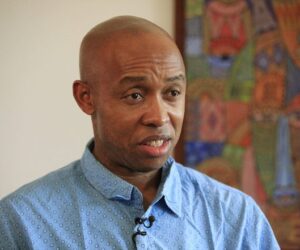Health is wealth. For Nigeria, this is no longer just a slogan but an urgent national imperative. The healthcare sector sits at the intersection of social well-being and economic growth. It is where lives can be saved, productivity expanded, and billions of dollars in investment unlocked. What is required? With the right vision and execution, Nigeria’s next economic “unicorn” may well be born not from fintech or oil, but from healthcare.
Nigeria’s healthcare system remains dangerously overstretched. The doctor-to-patient ratio stands at 1:5,000, far above the World Health Organization (WHO) recommendation of 1:600. Fewer than 10 percent of Nigerians have health insurance, leaving households exposed to catastrophic out-of-pocket payments. Over 70 percent of health spending comes directly from families, and the country loses more than $1 billion annually to medical tourism.
Public financing remains among the weakest globally. Nigeria spends an estimated $30 per capita annually on health, one of the lowest in the world. The Coordinating Minister of Health, Prof. Muhammad Ali Pate, has acknowledged decades of underinvestment but insists reforms are underway to expand insurance coverage, revitalise primary healthcare, and strengthen transparency and accountability. This underscores the urgency of repositioning healthcare not merely as a social service, but as a core pillar of economic competitiveness.
And yet, the potential is vast. According to the International Finance Corporation (IFC), Nigeria’s life sciences sector, currently valued at $46 billion, could double by 2030. This expansion could generate $1.6 billion in new investment and create nearly 50,000 jobs. The Presidential Initiative for Unlocking the Healthcare Value Chain (PVAC) has already set targets: reduce Nigeria’s reliance on imported medical products from 70 percent to 30 percent by 2030, expand local pharmaceutical and device manufacturing, and position health as a driver of economic resilience.
These are not mere aspirations. They are achievable goals if matched with bold policy, private-sector partnership, and consistent execution and monitoring.
Learning from local success stories
Before looking abroad, Nigeria must acknowledge its own success stories. They prove that with the right models, healthcare can be both impactful and profitable.
Garki Hospital, Abuja: Once a moribund public facility, it was transformed under a concession with Nisa Premier Hospital into a thriving 24/7 operation. In a decade, it remitted nearly ₦200 million to government coffers, invested ₦4.6 billion in equipment, and pioneered the first sleeve gastrectomy in Sub-Saharan Africa. A model of how public-private partnerships (PPPs) can turn state liabilities into productive assets.
Lagoon Hospitals (Iwosan Group): Nigeria’s first private hospital to perform open-heart surgery, achieve Joint Commission International accreditation, and deploy full electronic medical records across its facilities. These are global standards achieved locally.
Delta State Access to Finance (A2F) Scheme: Another notable case is Delta State’s Access to Finance (A2F) Scheme, developed through a partnership between the Delta State Contributory Health Commission, PharmAccess, and the Healthcare Federation of Nigeria (HFN). By blending state policy with private-sector financing and expertise, the initiative revitalised primary healthcare centres across underserved communities. The result has been not only improved service delivery but also expanded healthcare access for more than 1.2 million residents, evidence that structured collaboration can extend the reach of care far beyond the limits of government budgets.
These examples show that innovation, partnership, and investment are not only possible but already underway. The challenge is scale.
Lessons from abroad
Around the world, countries that once struggled with weak public systems have unlocked growth by engaging the private sector intelligently:
India: Nearly 70 percent of healthcare delivery is private, with over 60 percent of infrastructure in private hands. Instead of competing, the government created the Ayushman Bharat (PM-JAY) insurance scheme, which channels public subsidies into private clinics, expanding universal coverage and easing strain on state hospitals. In 2023 alone, healthcare and pharma attracted $5.5 billion in private equity and venture capital.
Cambodia: Since 1998, the government has contracted private providers to deliver public healthcare, combining flexibility with oversight.
Brazil: São Paulo dramatically reduced morbidity and increased coverage by contracting nonprofit private bodies to deliver primary healthcare.
These global lessons are instructive: private healthcare, when properly regulated, becomes a national asset, not a competitor to public provision.
The cautionary fine print
Nigeria must also tread carefully. Private equity in healthcare is a double-edged sword. Studies in the United States have found that some PE-acquired hospitals experienced higher complication rates, more infections, and significantly increased charges. Patients bore the cost of profit-driven efficiency.
Yet the same studies acknowledge that many of these hospitals were financially failing and would have collapsed without private capital. The lesson is clear: investment must come with strong quality safeguards, pricing transparency, and accountability mechanisms. Profit and impact can align—but only under robust regulation.
This was echoed at the 2025 National Health Financing Policy Dialogue, where stakeholders warned that Nigeria’s health crisis is not only about insufficient funds but also about inefficient allocation and weak accountability. Transparent financial management, stronger state-level oversight, and digital data systems were highlighted as vital to restoring public trust.
Why the Nigerian Government should bet on private healthcare
The arguments for action are overwhelming:
● Government budgets alone cannot sustain healthcare.
● Importing basic supplies like oxygen is unsustainable and embarrassing.
● Philanthropy cannot substitute for structured financing and is not sustainable.
● Self-sufficiency in medical manufacturing will create jobs, attract investment, and reduce costs.
● Human capital development in healthcare requires private investment—mirroring how Nigerian banks built training schools to expand capacity. Already, Lily Hospitals has established a private nursing school, while Iwosan Lagoon and First Cardiology are partnering with teaching hospitals to build specialist capacity.
In short, healthcare must be treated as both a social good and an economic growth strategy.
Healthcare Federation of Nigeria recommendations: Policies that fuel private healthcare growth
For Nigeria to unlock this potential, the government must:
- Expand and professionalise PPPs: Use Garki Hospital as a flagship, not an outlier. Create enforceable, transparent contracts with clear remittance goals, performance targets, and accountability covenants.
- Simplify regulation: Eliminate bottlenecks in licensing, approvals, and importation. PVAC’s quarterly consultative forums with businesses should be institutionalised into law.
- Scale insurance penetration: Link the National Health Insurance Authority (NHIA) with digital ID systems and subsidise premiums for informal workers. This aligns with the NHIA’s recognition that insurance represents the strongest form of solidarity. Nigeria’s target of enrolling 44 million citizens by 2030 underscores both the urgency and the opportunity for scale.
- Incentivise local production: Provide tax breaks, low-cost land, and research partnerships with universities to seed pharmaceutical and device manufacturing clusters.
- Embed quality standards: Require private hospitals and clinics to meet accreditation benchmarks. Make performance metrics public to ensure accountability.
- Classify healthcare as infrastructure: This will enable access to long-term, lower-interest financing, as India and Singapore have done.
- Innovate in financing: Develop blended finance models, credit guarantees, Naira-based patient capital, and health impact bonds that attract donor and private funding while tying outcomes to measurable health gains.
- Celebrate success: Spotlight models like Lagoon, Garki, and Delta State’s A2F scheme to attract more investors and strengthen trust in the sector.
The stakes for Nigeria
Why should the government act decisively now? Because the cost of inaction is already too high. A population of over 200 million cannot continue with a healthcare system that leaves most uninsured, underserved, and dependent on medical tourism. Because the economic opportunity is too large to ignore: $1.6 billion in new investment and 50,000 new jobs by 2030. And because health is not only about healing bodies—it is about securing Nigeria’s competitiveness, productivity, and national confidence.
The lesson from both homegrown models and international experience is clear: healthcare thrives when policy enables private investment while protecting patients. This is the balance Nigeria must now achieve.
Tomorrow is not guaranteed. The time to act is now.
This article is a partnership between the Healthcare Federation of Nigeria (HFN) and BusinessDay to highlight policies and programmes to promote the rebuilding of Nigeria’s health sector. As a private sector-led coalition, HFN advocates for policies and partnerships to strengthen healthcare delivery. This partnership aims to spark meaningful discussions and drive transformative change in Nigeria’s health sector.
The contributors to this article are members of the HFN Editorial Committee: Njide Ndili (President of HFN), Dr Ayodele-Cole Benson (First Vice-President of HFN), Dr Folajimi Adebowale (CEO of Recon Health Media), and Fola Laoye (Co-Founder and CEO of Iwosan Investments Limited).









